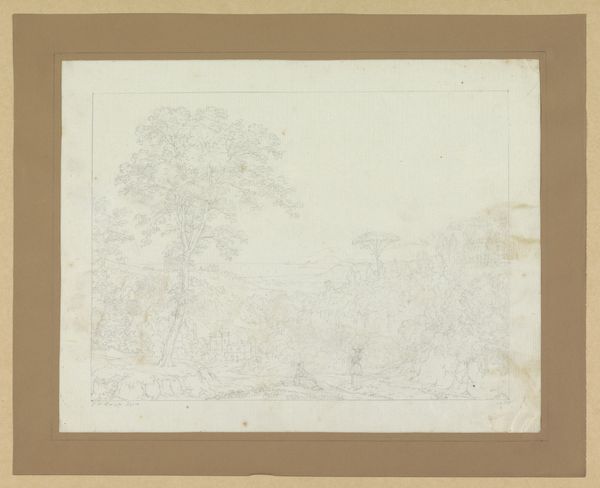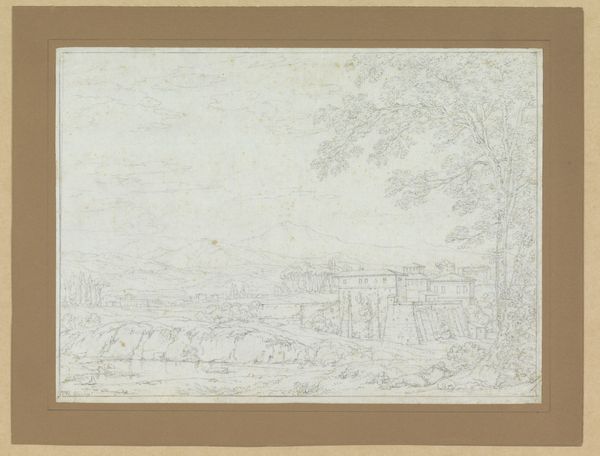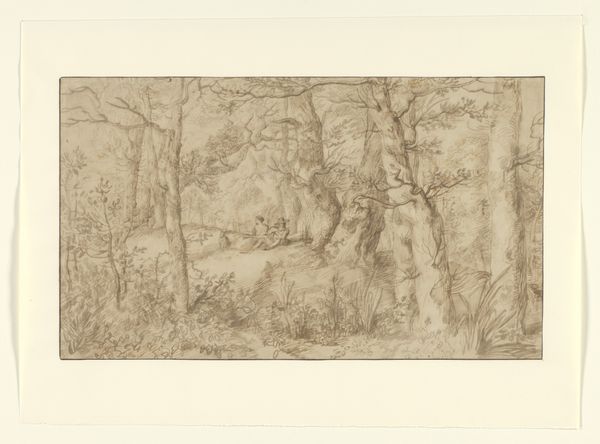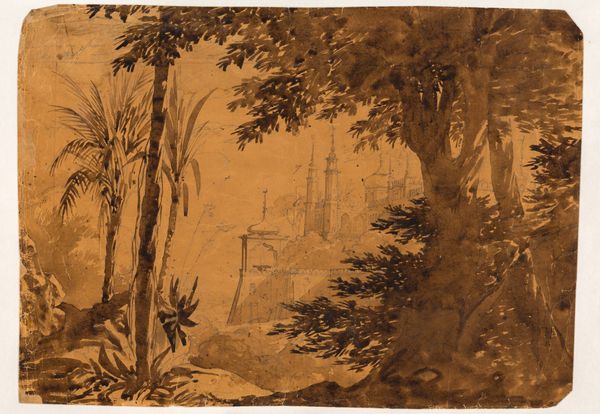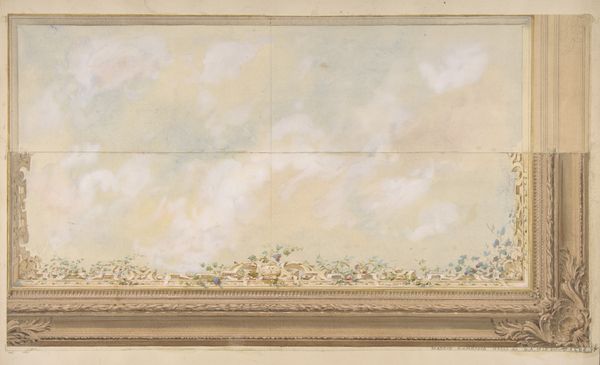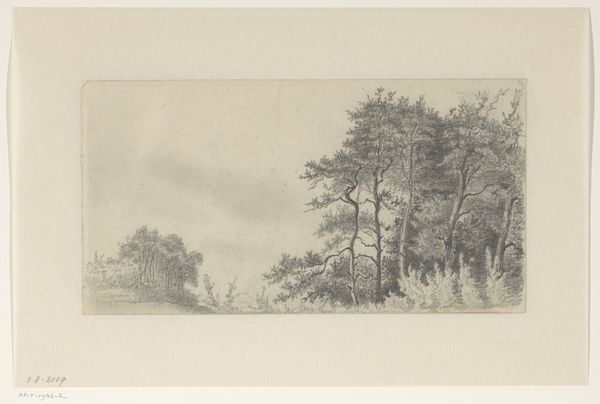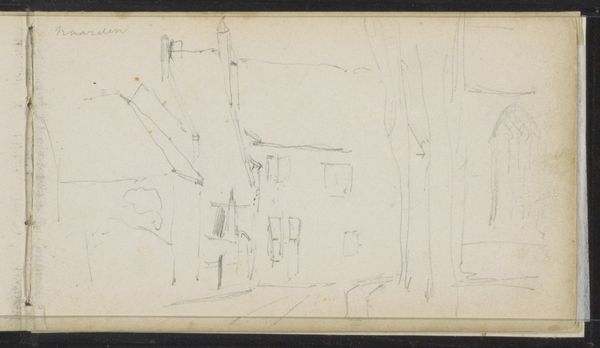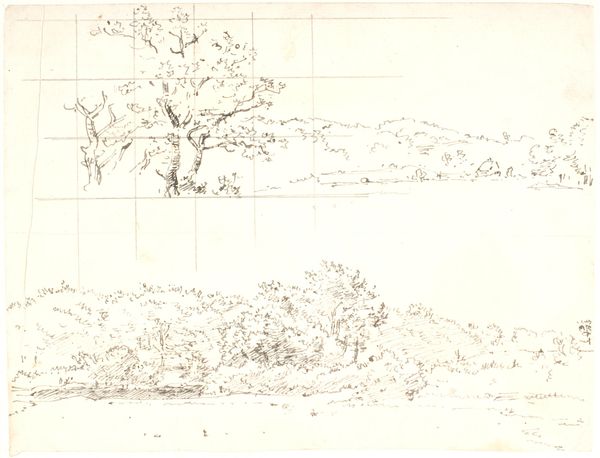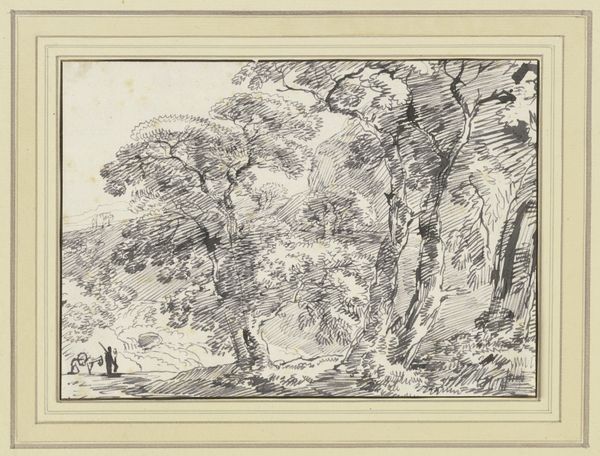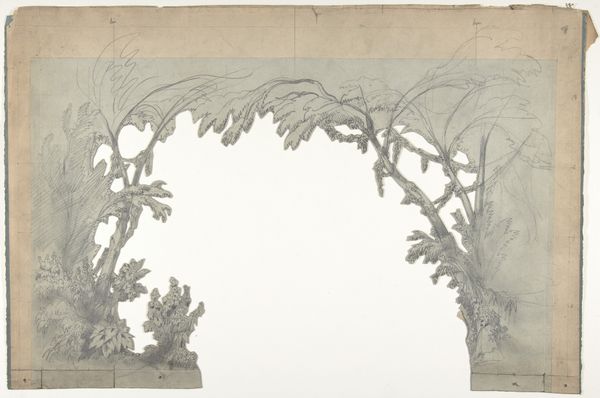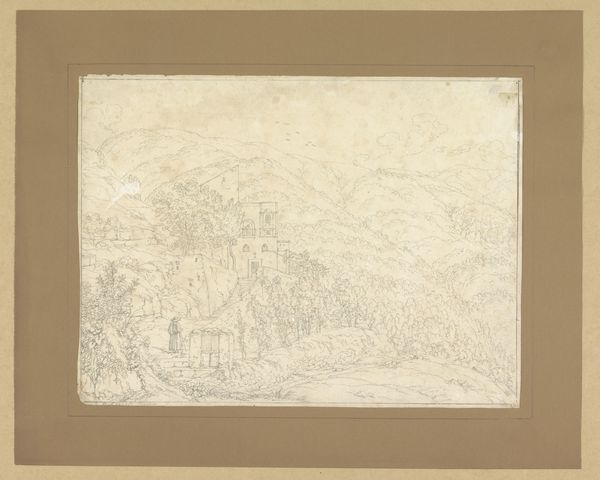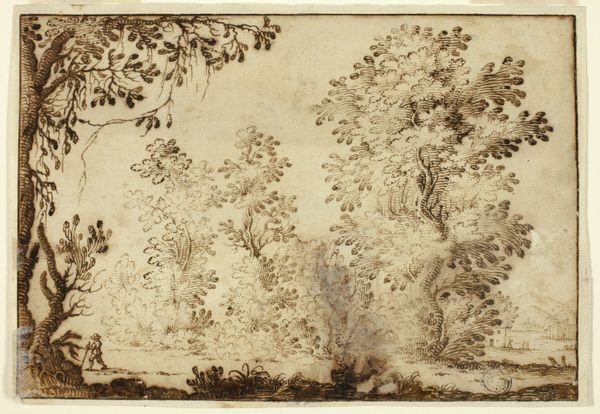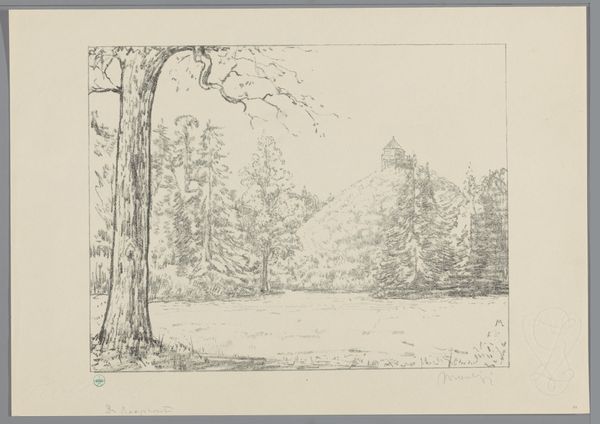
Copyright: Public Domain
Editor: This is Friedrich Wilhelm Ludwig's "View of Amalfi from the Monastery of S. Francesco," from 1851. It's a drawing done with ink, gouache, and other materials, apparently en plein air. It has a very serene quality, almost dreamlike, given its hazy rendering. What draws your eye to it? Curator: It's fascinating how the artist uses the framework of the pergola—the pillars and vines—to create a symbolic threshold. Look at the carefully placed vines. What feelings do they evoke in you? Editor: Well, they seem like both a barrier and an invitation… a sense of being sheltered but also a longing to be *out there.* Curator: Precisely! The vines, traditionally associated with life, growth, and even intoxication, frame the "civilized" Amalfi, presenting us with a carefully cultivated paradise. This view wasn't just observed; it was deliberately constructed, wasn't it? What’s so special about the choice of this view? Editor: It overlooks the town, yes. So maybe the monastery represents a separation from the mundane, a space for contemplation elevated above the daily life represented by the town? Curator: Exactly! The cultural memory associated with monasteries as places of refuge and reflection resonates deeply here. It offers us a glimpse into the artist’s perception of the spiritual and the worldly. Notice also the muted palette; what is that trying to evoke in our memory? Editor: A historical record; things fade. It's all quite fascinating. I initially just saw a pretty picture! Curator: And sometimes that is more than enough. It allows us to peek into not only the beautiful landscape, but also into the relationship with memory that viewers from that time would carry. Editor: I'll definitely see landscape paintings differently now. Thanks!
Comments
No comments
Be the first to comment and join the conversation on the ultimate creative platform.
